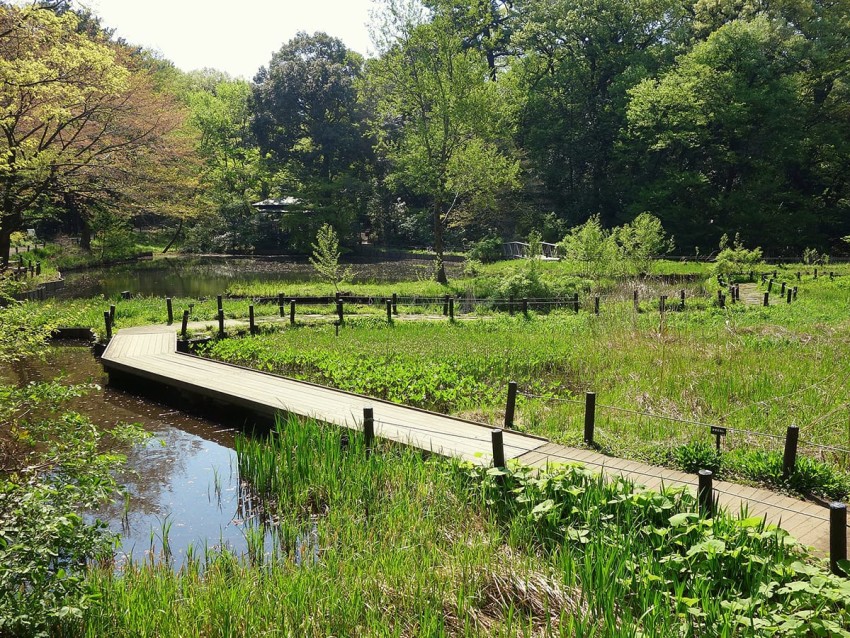See Tokyo (almost) as nature intended at the National Institute for Nature Study

The summer months in Tokyo, when the cicadas are at their loudest and even the greenery seems to be wilting in the heat, are an annual reminder that Japan's capital was once a tropical jungle. You might not think so looking out across a panorama of concrete, glass, and tarmac, but if it were ever to revert to its natural state, the city would be a steaming forest of towering trees, verdant undergrowth, and countless millions of creepy crawlies.
There are a handful of parks created for the preservation of nature in Tokyo, but the ancestral desire to deny its primordial strength is such that even up as parodies of wilderness. The city's biggest parks—Ueno, Shinjuku Gyoen 新宿御苑, Hibiya 日比谷, Toyama 戸山, and the like—purport to give residents a taste of nature in the raw but they are no less artificial than the city they offer refuge from. To compare any of them to the state of nature in Tokyo before the arrival of humankind would be like comparing a poodle to a wolf.
Chances are that even an escape to the Japanese countryside will leave you with a taste of saccharine. It's often said that 70% of Japan is forested, but most of its native tree cover was cleared in the post-war years to make way for Sugi (Japanese cedar) plantations. These days, with the building boom over, there's not much call for all those cedar trees, and their main purpose seems to be to give everyone hay fever.
There is, however, one place, where you can see the Tokyo landscape as nature intended: the National Institute for Nature Study (国立科学博物館附属自然教育園 kokuritsu kagaku hakubutsukan fuzoku shizen kyōikuen) in Shirokanedai 白金台 in Minato Ward 港区. This nature reserve is home to more than 200 species of plants, representing much of the native flora of the Musashino 武蔵野 region.
There are broad-leafed evergreen trees in their natural state, and native conifers like sweet acorn tree, bamboo-leaf oak, and pine. In the centre of the reserve is Bottle Gourd Pond (ひょうたん池 hyotan ike), named for its shape, which resembles a hyotan 瓢箪 (bottle gourd). A forest path takes you around the pond, meandering under the branches of oak, zelkova, and dogwood trees and offering restorative views over the marshes to the east.
Marshes and the creeks that feed them once covered much of the delta of the Sumida River 隅田川. The reeds and Japanese silver grass that used to blanket the landscape crop up time and time again in Edo era novels and plays.
The National Institute for Nature Study is also home to 130 bird species, among them the spot-billed duck and the snowy heron. They congregate around Waterfowl Marsh (水鳥の池 mizudori no ike), the largest of the marshes in the reserve.
There are also many native animals that would otherwise have been confined to folklore, such as tanuki 狸 (Japanese raccoon dogs), kitsune 狐 (foxes) and oshidori 鴛鴦 (mandarin ducks). The reserve also abounds in insect life.
Source: japantoday.com
